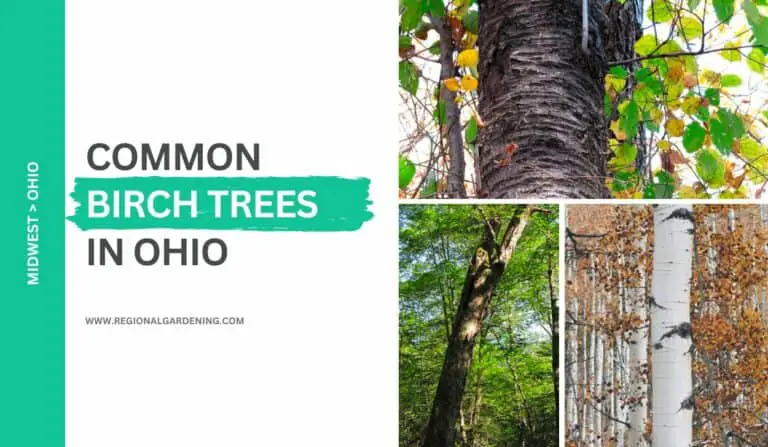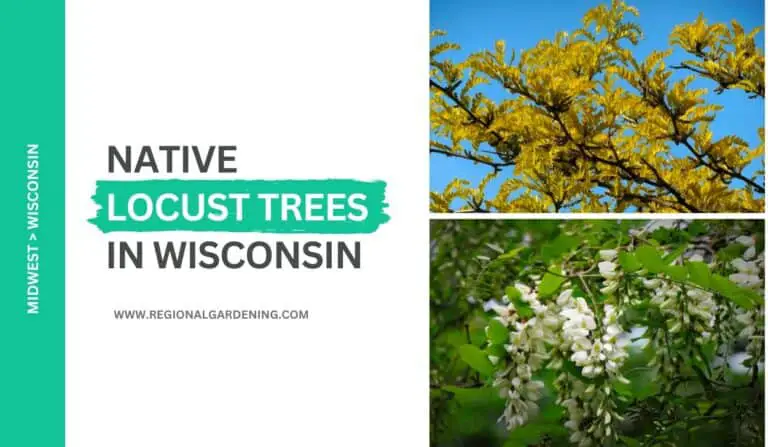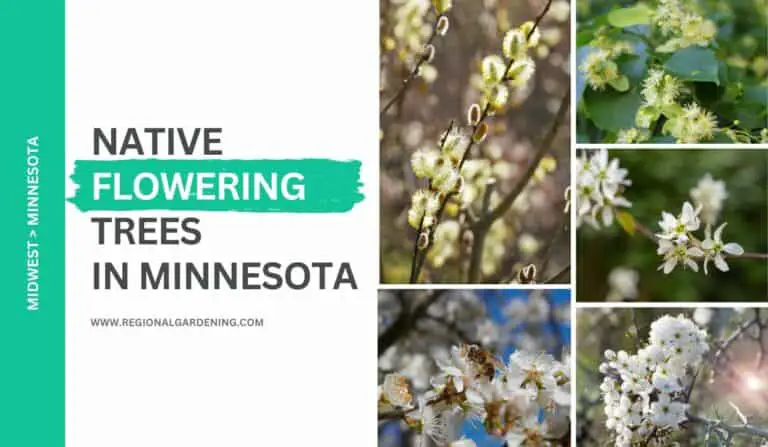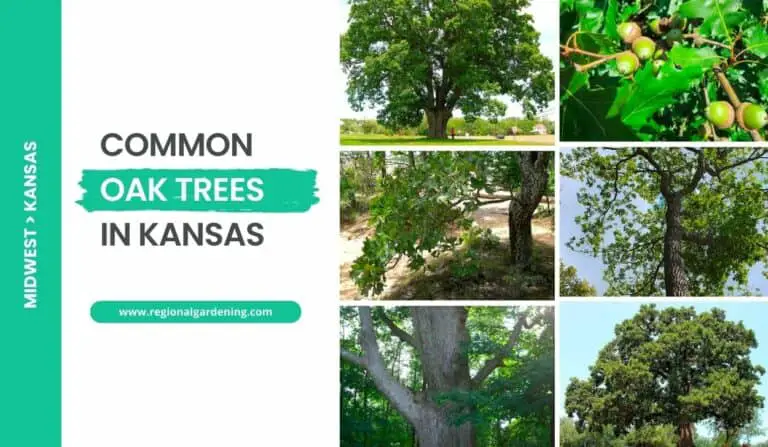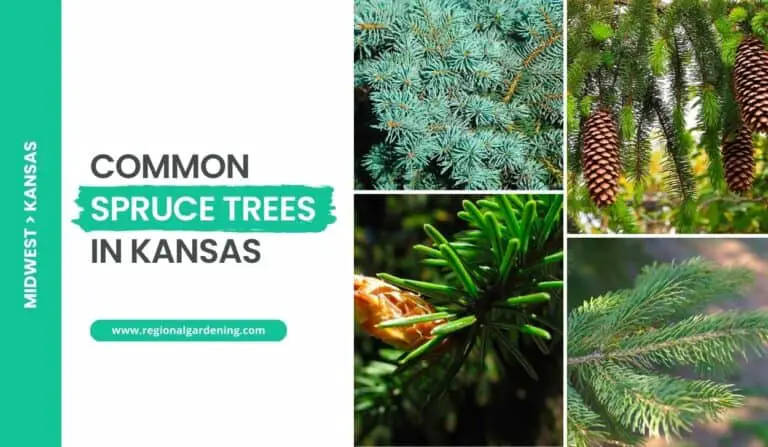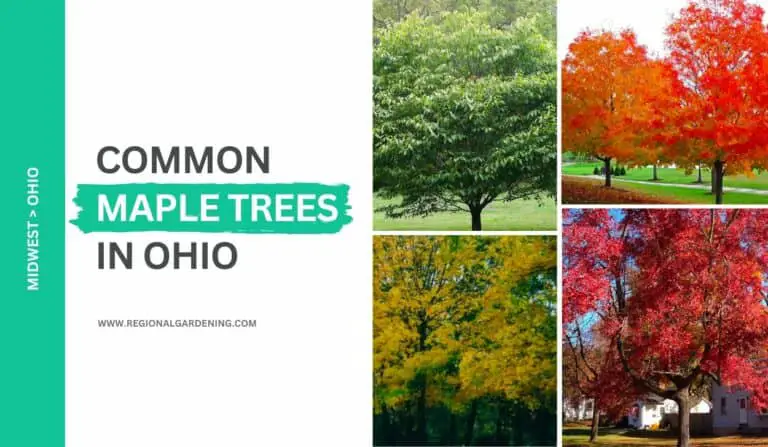5 Native Hickory Trees In Ohio (Pictures & Identification)
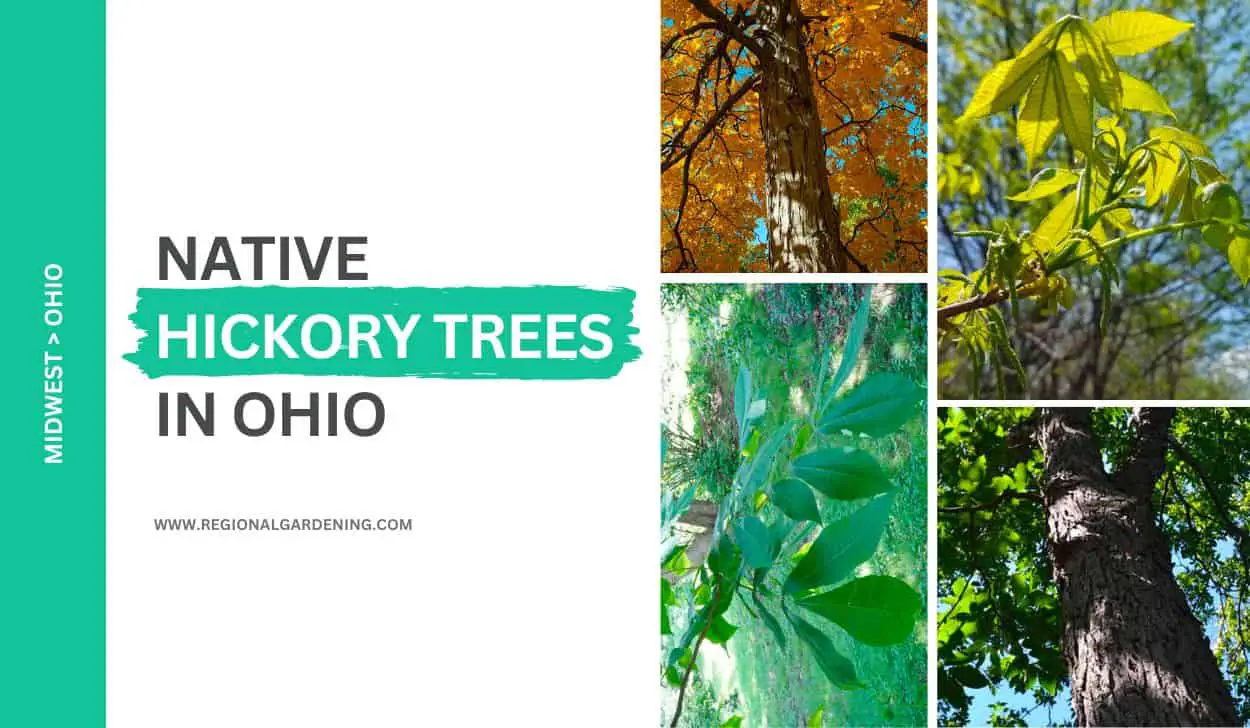
While strolling through Ohio’s verdant forests, it is difficult to miss the imposing, stately hickory trees that seem to reach the heavens. Hickory trees have long been a representation of tenacity and fortitude due to their robust, sturdy trunks and broad, branching canopies.
But these trees serve a much greater purpose than simply being a pretty sight; they are a vital component of Ohio’s natural landscape, offering a wide range of plant and animal species with food, shelter, and shade.
In this article, we’ll take a closer look at 5 of the most common hickory trees in Ohio, and discover the unique characteristics that help you identify them easily.
So, let’s begin.
1. Shagbark Hickory
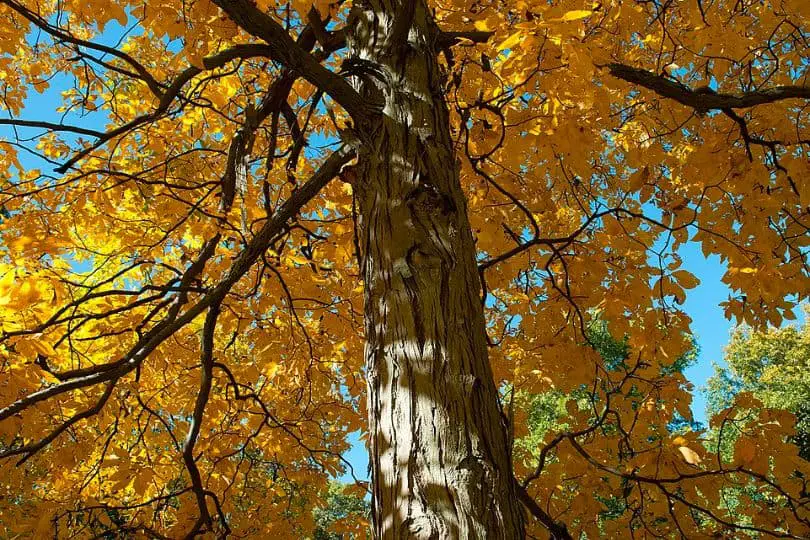
- Common Name: Shagbark Hickory
- Scientific Name: Carya ovata
- Mature Height: 40–60′ (12–18 m)
- Native/Non-Native: Native
- Flowers/Cones: Nuts
- Uses: Edible nuts, Wildlife food, Wood for tools and equipment
One of the most commonly found medium-sized hickory trees in Ohio, the Shagbark Hickory is a lovely tree that grows on damp hillsides. It grows 40-60 feet tall and has a single straight trunk with a narrow uneven crown.
The compound leaves range in length from 8 to 14 inches and contain five (occasionally seven) pointed leaflets linked directly to a central stalk. The leaves are yellowish-green, with fine-toothed margins and the upper three leaflets larger than the lower two. The leaves turn a lovely yellow color in the fall.
The tree’s most distinguishing feature is its gray bark, which peels off in large vertical strips, giving it a shaggy appearance. Shagbark Hickory produces green nuts that mature to brown, with a delicious, edible kernel.
The round to oval-shaped nuts have a thick, four-ribbed husk and are about 1 to 12 inches in diameter. Both wildlife and humans enjoy the nuts.
Shagbark Hickory wood is used to build tool handles, skis, and wagon wheels due to its extraordinary toughness. This species’ twigs contain a white pith, as opposed to walnut tree twigs, which have a light brown pith.
While the nuts and wood of the tree are valuable commodities, it is critical to maintain and preserve this unique species for future generations to enjoy.
2. Red Hickory
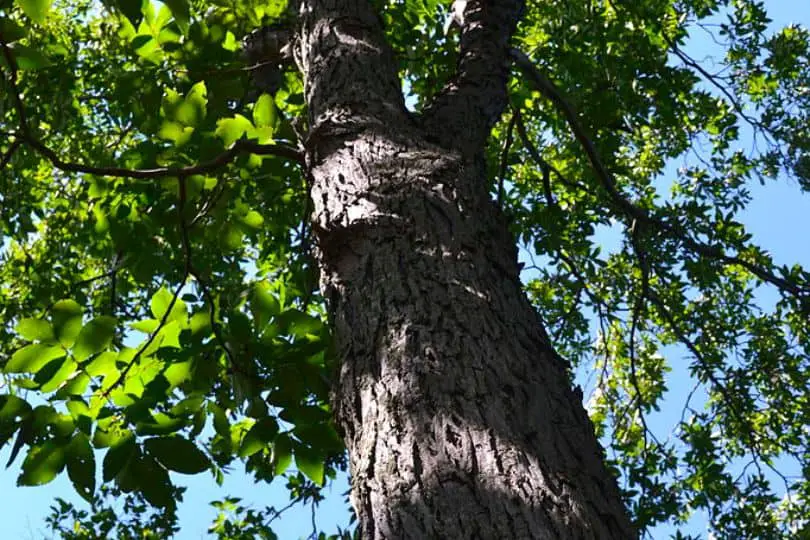
- Common Name: Red Hickory
- Scientific Name: Carya glabra
- Mature Height: 60-80 feet (18-24.5 meters)
- Native/Non-Native: Native
- Flowers/Cones: Small green nuts, 1-2 inches (2.5-5 cm) in diameter
Along with Shagbark, Red hickories are also among the most commonly found in medium-sized hickory trees in Ohio. The tree has a single straight trunk, a thin round crown, and short crooked branches, the tips of which frequently point downward.
The leaves are compound, 6-10 inches (15-25 cm) long, and made up of 5 or occasionally 7 lance-shaped leaflets with a fine-toothed edge and hairy midrib. The leaves are yellowish-green above and whiter below, and they become yellow in the autumn season.
Red Hickory is well-known for its pear-shaped to round green nuts that mature to brown and grow in tiny clusters. The nuts’ thin shell splits open into four halves, revealing an inedible nut. The bark of the tree is gray and shaggy, often peeling into long, thin, loosely linked pieces as it ages.
Red Hickory cherries are not edible to humans, but they are an important food source for wildlife such as hogs and squirrels. The flavor of the nut varies from sweet to bitter depending on the tree variety, making it unsuitable for human eating.
Red hickory wood was originally utilized in wagon wheels and is now used for furniture, flooring, and tool handles.
Red hickory is typically found in the eastern United States on well-drained dry soils, hillsides, and dry ridges. Unlike Shellbark Hickory, which thrives in moist to wet areas, Red Hickory is typically found in upland mixed populations of deciduous trees.
The tree has been in existence for more than 150-200 years and not just in Ohio, it is one of the most common hickories in the eastern United States.
3. Shellbark Hickory
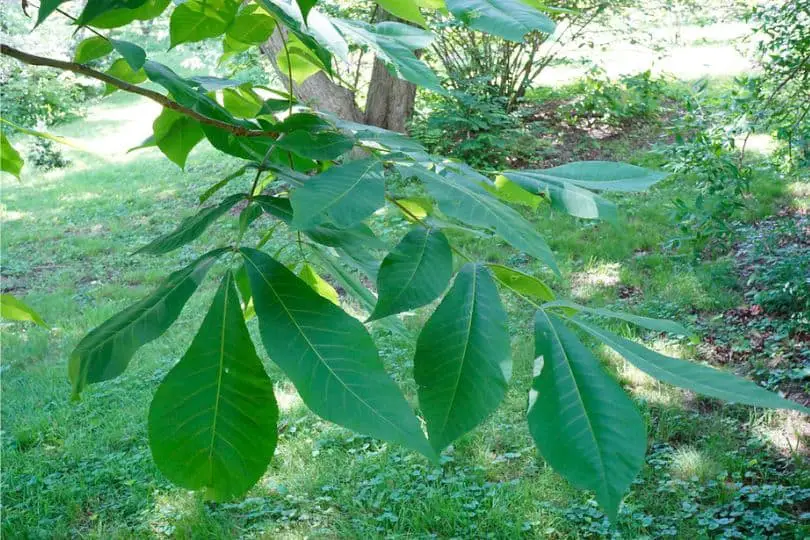
- Common Name: Shellbark Hickory
- Scientific Name: Carya laciniosa
- Mature Height: 70–90 feet
- Native/Non-Native: Native
- Flowers/Cones: Fruit
- Uses: Edible nuts, wildlife food, lumber
The Shellbark Hickory is a huge deciduous tree that can reach heights of 90 feet. It features a thin circular crown and a single straight trunk that is generally branch-free on the bottom half.
The compound leaves range in length from 12 to 20 inches and are composed of 7 to 9 lance-shaped leaflets. The leaves are glossy green on top and lighter below, with a delicately serrated edge. In the fall, the leaves of the Shellbark Hickory become a gorgeous shade of yellow which is a sight to watch.
The huge and unusual fruit of the Shellbark Hickory is one of the easiest ways to identify it. At maturity, the thick-shelled green fruits turn dark brown and measure 2 to 3 inches in diameter. Wildlife consumes the fruit, which is edible. The husk separates into four parts, revealing an almost spherical nut.
Shellbark Hickory bark is gray and becomes rough and shaggy with age, often flaking into long, thin, loosely linked strips. The species name laciniosa means “with folds” in Latin and refers to the shaggy bark. The orange twigs are also noticeable, although not always.
Shellbark Hickory thrives in damp to wet soils, floodplains, and full sun to partial shade. It is native to the United States and can be found all over the country, except for the far eastern boundary of Ohio.
4. Bitternut Hickory
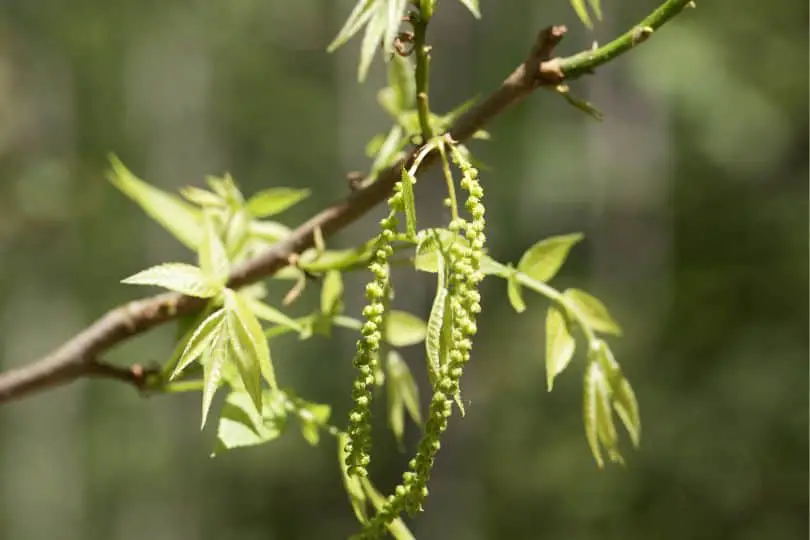
- Common Name: Bitternut Hickory
- Scientific Name: Carya cordiformis
- Mature Height: 50-100 ft (15-30.5 m)
- Native/Non-Native: Native
- Flowers/Cones: Produces nuts
- Uses: Wood is used for smoking meat, and oil extracted from nuts is used for lamp fuel
The tallest hickory trees in Ohio, Bitternut Hickory trees are commonly found in damp soils and lowlands. It has a strong, straight trunk with slender, upright branches forming an open, circular crown.
Bitternut Hickory leaves are complex and range in length from 6 to 10 inches (15 to 25 cm). They have 7-11 small leaflets that are 3-6 inches (7.5-15 cm) long with pointy tips and fine-toothed margins and are alternately connected. The leaves are glossy green on top and paler on the bottom. They lack a leaflet stalk (sessile) and adhere to the core stalk (rachis) directly.
Bitternut Hickory produces spherical nuts that are 34-112 inches (2-4 cm) in diameter. The nuts have a pointed end and four ridges that extend to it. The husk’s outer surface is covered in yellowish hairs, and the fruit is too bitter to eat.
Because of their bitter taste, the cherries of the Bitternut Hickory are considered inedible by humans and other wildlife. Due to this, the plant is known by its common name.
Bitternut Hickory leaves turn a golden yellow in the fall. The plant is native to North America and can be found from east to west. Bitternut Hickory wood is used to smoke meat and has the greatest flavor of all hickory trees.
The oil collected from its nuts is used to fuel lamps. Bitternut Hickory is sometimes known as Bitter Pecan because it is closely related to the common pecan. Due to its affinity for moist or loamy soils, it is sometimes known as Swamp Hickory.
5. Mockernut Hickory
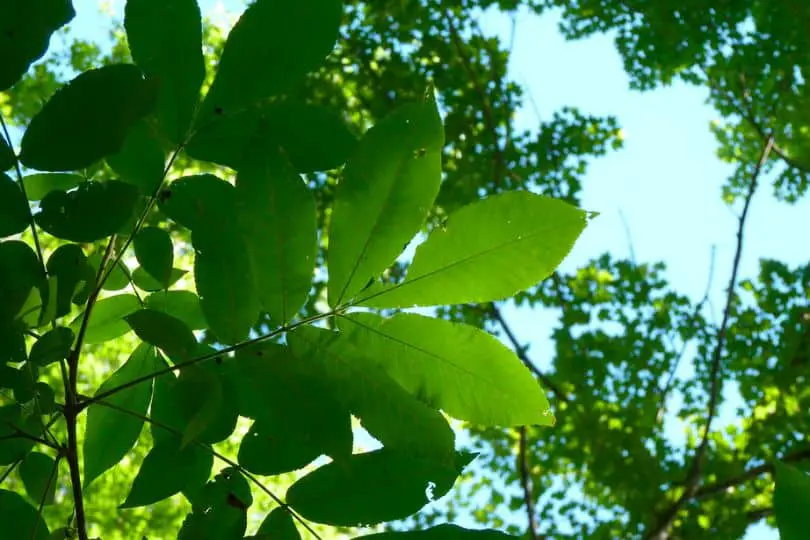
- Common Name: Mockernut Hickory
- Scientific Name: Carya tomentosa
- Mature Height: 40-80 feet (12-24.5 meters)
- Native/Non-Native: Native
- Flowers/Cones: Immature
- Uses: Furniture, smoking meat, wildlife food
The Mockernut Hickory, another variety among tall hickory trees in Ohio is a large tree with a narrow, round crown that grows straight. It’s also known by the name White Hickory.
Its complex leaves are made up of 7-9 elliptical leaflets that are fine-toothed and lustrous dark green on top but lighter and hairy on the bottom. The tree’s bark is gray to light brown and has small forked ridges.
The cherries are one of the great draws of the Mockernut Hickory. When mature, the thick-shelled green nut, which measures about 112-2 inches (4-5 cm) in diameter, becomes brown.
The edible tan to light brown kernel inside the shell is only around 34-1 inch (2-2.5 cm) broad and 4-sided. The tree gets its name from the huge size of the nutshell, which was previously dubbed “Mockernut” due to the little kernel inside such a thick shell. Despite their modest size, nuts are an essential food source for many birds and animals who rely on them to survive the winter.
Mockernut Hickory is a natural tree that grows in damp highland locations with oaks and other hickories on ridges and hillsides in sunny areas. This species can live for 300-500 years and is prevalent in the eastern region of the United States. It bears nuts after 20 years, but the optimal nut-bearing age ranges from 50 to 150 years.
The tree’s wood is valued for its strength and durability, and it has been used to make furniture. It’s also a common method for smoking meats like ham.
The species name, tomentosa, is derived from the Latin phrase for “covered with dense short hairs,” which alludes to the underside of the leaves and aids in species identification. This tree’s sturdy, hairy twigs are frequently reddish brown, making it easy to identify even when it is not yielding fruit.
Similar Articles
- White Flowering Trees In Ohio
- Yellow Flowering Trees In Ohio
- Common Oak Trees In Ohio
- Common Nut Trees In Ohio
- Common Willow Trees In Ohio
- Common Purple Trees In Ohio
- Common Pine Trees In Ohio
- Common Birch Trees In Ohio
- Common Ash Trees In Ohio
- Native Cherry Trees In Ohio
- Common Elm Trees In Ohio
- Common Spruce Trees In Ohio
- Common Poplar Trees In Ohio
- Native Plum Trees In Ohio
- Common Maple Trees In Ohio
- Common Cedar Trees In Ohio
- Native Aspen Trees In Ohio
- Common Locust Trees In Ohio
- Common Palm Trees In Ohio
Native Hickory Trees In Ohio – Sources
The Regional Gardening team makes sure that the information in our articles is accurate by only using sources that are known to be trustworthy. Some of these sources are peer-reviewed journals from government agencies, well-known universities, and scientific research organizations.
- Trees Of Ohio, Division Of Wildlife
- Trees Of Ohio Field Guide, Book by Stan Tekiela
- Ohio Trees, OSU Extension Publications
- Native Plant Lists, Ohio Department Of Natural Resources
- Ohio Department Of Agriculture
- Gardening, The Ohio State University


